Rub for Tri-tip
Combine in a mixing bowl:
- 1/2 tbsp freshly cracked black pepper
- 1/2 tbsp Diamond crystal kosher salt
- 1/2 tbsp Lawry’s seasoned salt
Apply this to both sides of the tri-tip:
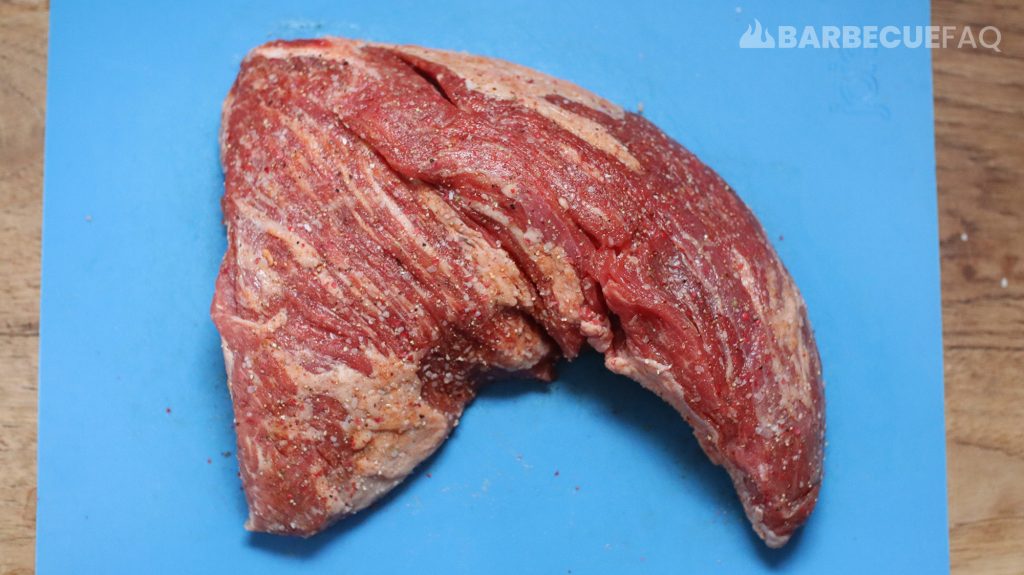
Tri-tip is a very versatile cut of meat.
It pairs well with most seasonings or rubs and you’d be hard pressed to over-season the meat.
Get Your Smoker to 180-225F
I used post oak wood chunks and added new chunks every 45-60 minutes.
The goal is to smoke as low as possible as this cut isn’t super thick.

Take the Tri-tip Off to Rest 10F Under Your Target Temperature and then Sear
My goal is 135F – so I took it off at 125F.
This roast smoked for 1 hour and 30 minutes.
To sear you can:
- Bump the temperature of your grill.
- Use a cast iron skillet with a high smoke point oil.
- How I did it below.
For this recipe, I opted to sear with my charcoal chimney (1/2 chimney) and grill grates.
Sear for 1 minute on each side to get some char:

Resting Tri-Tip
I rested this for 10 minutes, uncovered on my counter.
Do not cover in aluminum foil as this just ruins the outer crust you created when searing.
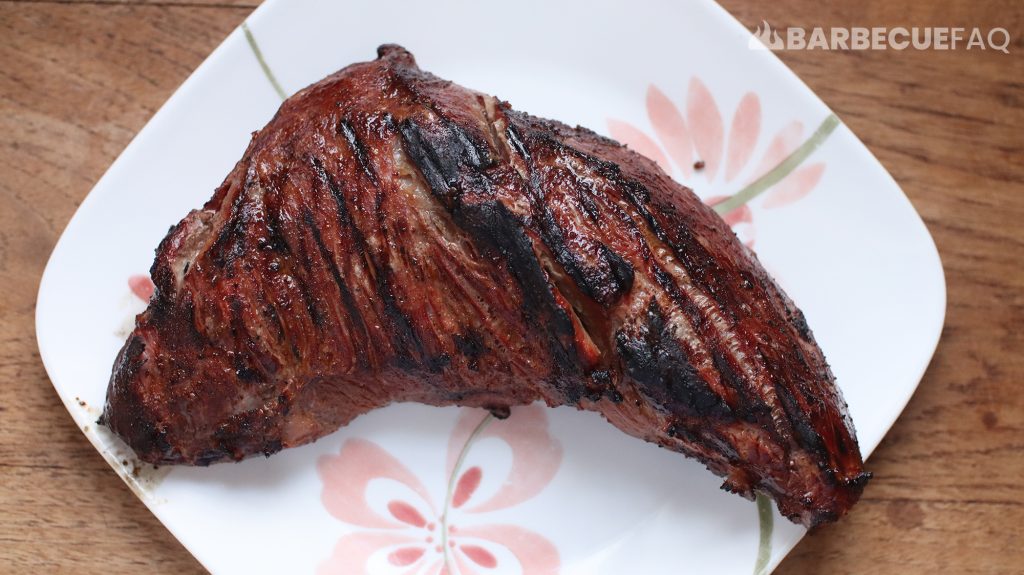
Slicing Tri-tip Correctly
Tri-tip has two grain directions.
Start by slicing it in half at the “boomerang” inflection – this is roughly where the grain changes:

Once you’ve done this, you can slice against the grain (slice perpendicular) on both halves.
Pictured below in dotted green lines is how these halves would be sliced against the grain:

Reverse Seared and Smoked Tri-Tip Recipe
Ingredients
- 2.62 lbs Tri-tip
Dry Rub for Tri-tip
- 1/2 Tbsp Kosher salt
- 1/2 Tbsp freshly cracked peppercorns
- 1/2 Tbsp Lawry's seasoned salt
Instructions
- Remove the meat from the packaging and pat dry.
- Combine dry rub ingredients in specified quantities and the season all sides of the tri-tip.1/2 Tbsp Kosher salt, 1/2 Tbsp freshly cracked peppercorns, 1/2 Tbsp Lawry's seasoned salt
- Put dry-rubbed tri-tip on a plate and in the fridge while you prepare your smoker.
Get Your Smoker to 180-225F
- Once at temperature put on your smoker and add your favorite wood.
- I used post oak and added new wood chunks every 45-60 minutes.
Take Tri-tip Off Smoker 10F UNDER Your Target Temperature
- My goal was 135F so I took the tri-tip off at 125F.
- Either get your smoker to 400F-500F OR sear in a cast iron skillet over medium-high heat OR do like I did and light 1/2 chimney of charcoal and put grill grates on top.The goal is just to get some char on the outside.
- With my setup I seared for 1 minute on each side.
Rest the Tri-tip for 10 minutes
- Rest on the counter on a plate, uncovered. Don't tent with aluminum foil.
Slice the Tri-tip Correctly
- Tri-tip has two grain directions that need to be sliced against the grain to be made tender.Use my photos above to see how to slice it correctly.


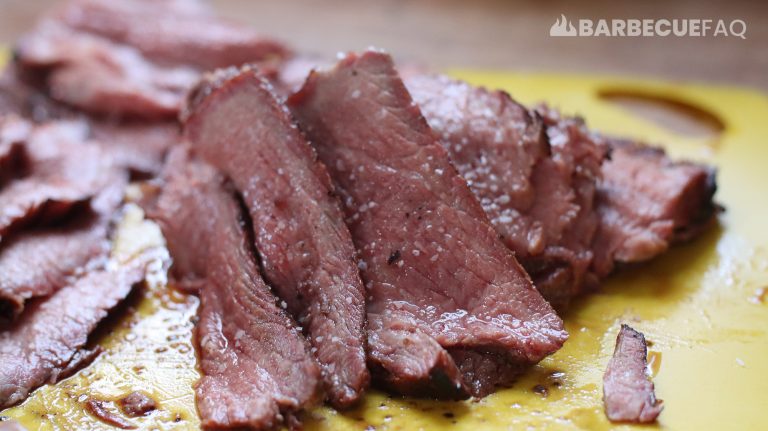

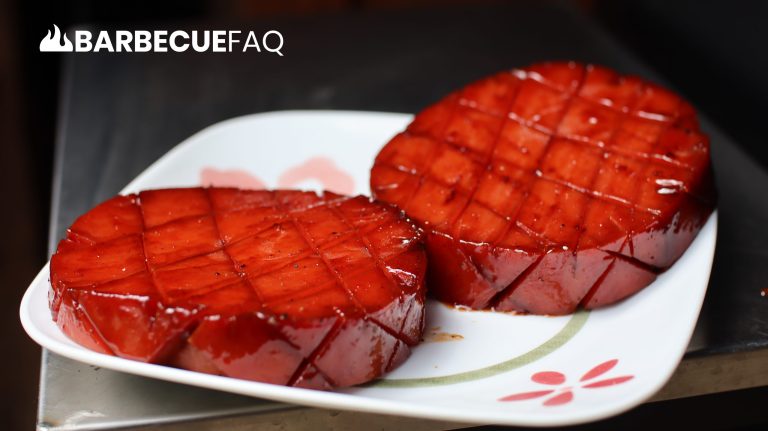
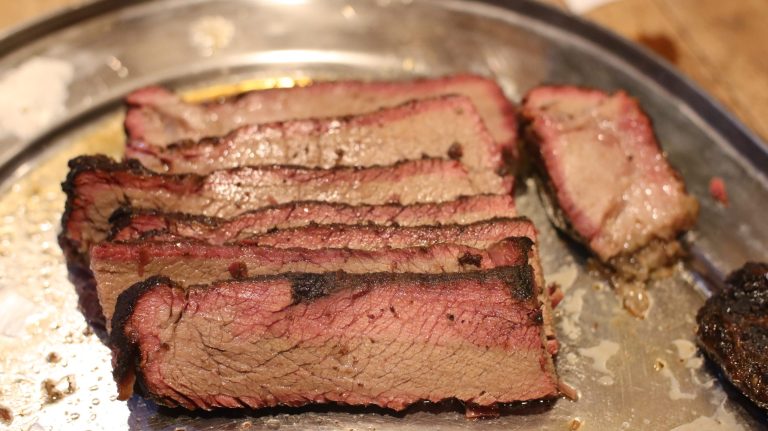

4 comments
Ron Pierce
Awesome article, Dylan! I’ll definitely give this a try in the summer.
Dylan Clay
Cheers Ron – let me know how it goes.
Shane
This is a great article on a cut I hadn’t tried before. A lot of helpful information in here. Thanks!
Dylan Clay
Happy to help Shane!